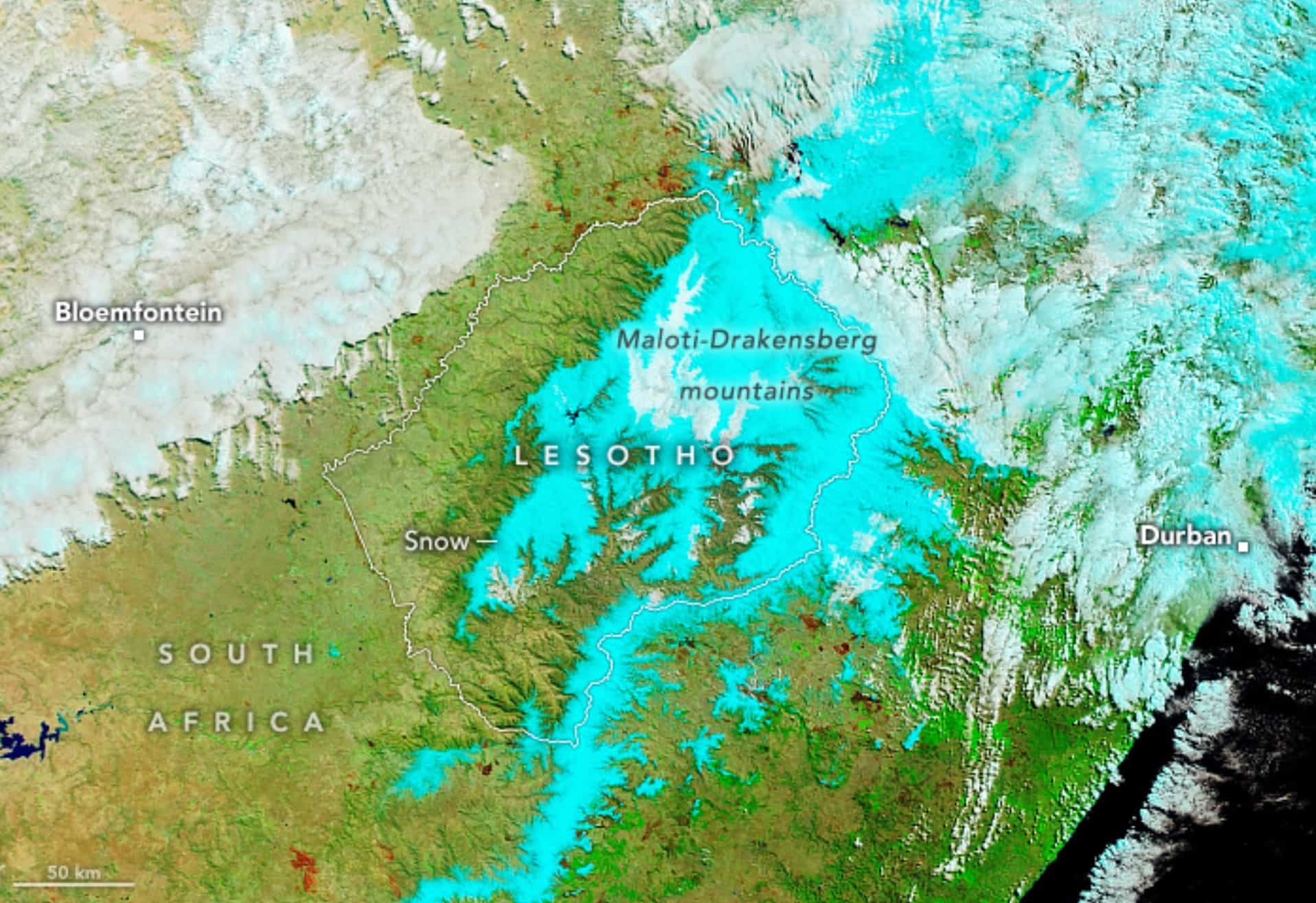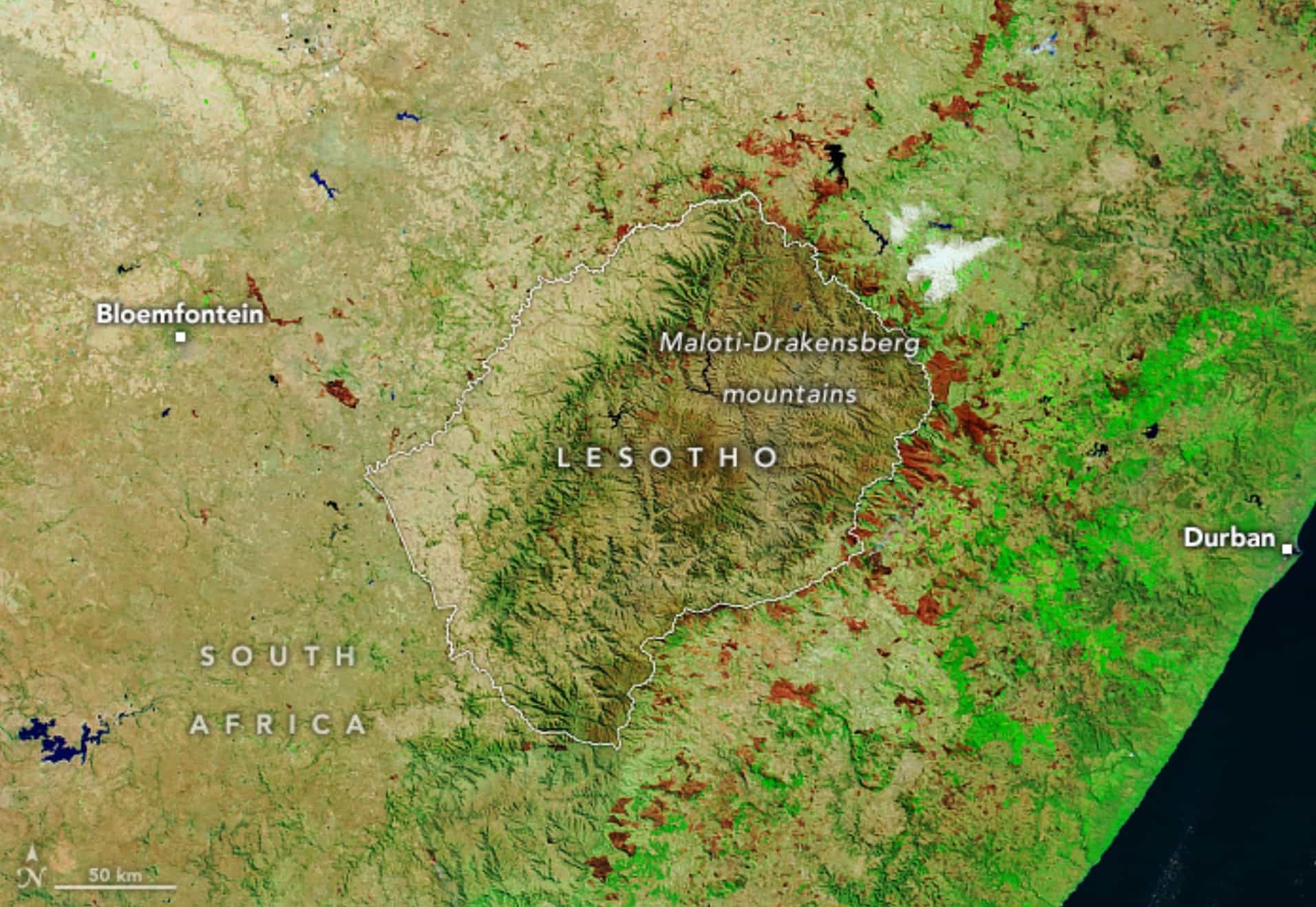
This post first appeared on NASA Earth Observatory and was written by Kathryn Hansen.
The first day of spring 2024 looked more like winter in some parts of southern Africa after a late-season storm dropped snow on Lesotho and several nearby provinces of South Africa. The storm halted traffic on a major highway that links the coastal city of Durban with Johannesburg and brought several feet of fresh powder to Lesotho’s only ski resort.
Much of the snow fell in the Maloti–Drakensberg mountains, which span about 40,000 square kilometers (15,000 square miles) across Lesotho and South Africa. According to Jennifer Fitchett, a University of the Witwatersrand scientist, the range’s higher elevations—primarily in Lesotho—see about eight snowfall events yearly, which can occur as late as November. “However, snow of this geographic extent and depth is indeed very unusual in general and for this time of the year.”
This image (above) shows the extent of the region’s snowfall on September 22. For comparison, the other image (below) shows the same area on September 3, several weeks before the storm. The images are false color to help differentiate between areas of snow and ice (blue) and water clouds (white). Note that some of the clouds contain ice and appear light blue. The dark brown patches are burned areas from past fires. Both images were acquired with the MODIS (Moderate Resolution Imaging Spectroradiometer) on NASA’s Terra satellite.
The heavy snow was fueled by a strong low-pressure system that became cut off from the main flow of air, also known as a cut-off low. Fitchett used NOAA’s air mass back-trajectory model to show that this snowfall event originated over the Southern Ocean and moved northeast, then curved northwest toward southern Africa. While past storms have followed similar trajectories, most snow-bearing air masses approach Lesotho from inland areas, according to Fitchett’s analysis of the region’s snowfall events between 2017 and 2022.
Despite only comprising around 8 percent of the total land area, the mountainous regions of South Africa and Lesotho provide roughly half of the water supply for the region. This water—some of which comes from melting snow—helps sustain the region’s ecosystem and is used by people for irrigation and drinking water.
NASA Earth Observatory images by Michala Garrison, using MODIS data from NASA EOSDIS LANCE and GIBS/Worldview. Story by Kathryn Hansen.
